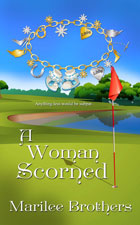Before You Taste
Uncorking: Before you enjoy the first sip of wine, one must uncork the bottle. That being said, you may have noticed that it isn't just New Zealand that is using screw caps (they were the first to use them). Even some of our Washington state wineries are using screw caps for the lower- to moderately-priced wines. But to get the cork out, a good corkscrew is essential. The Waiter's Corkscrew is my favorite; it's a flat, lever-type corkscrew with a convenient fold-up design and concealed knife to cut through the foil. A somewhat less popular corkscrew is actually a cork puller called the Ah-So. It has two metal blades that are inserted down the side of the cork. The most important advance in corkscrew design occurred with the birth of the Screwpull in 1979. It has a long worm, which is coated with Teflon so it glides without friction through the cork. As the worm descends, the cork is forced to climb up it and out of the bottle, requiring no effort on the part of the puller. The "rabbit ears" corkscrew plows a hole through the belly of the cork, ripping apart cells and causing the cork to disintegrate into bits. Then there's the electric corkscrew with an attached foil cutter. Mine works just fine but when I'm opening a $25+ bottle of wine, I prefer my Waiter's Corkscrew.
Aerating: When the bottle of wine is opened, the wine needs to breathe --that is technically the idea that wines soften and open up after exposure to air. The amount of air in the tiny space of the neck of an opened bottle is simply much too small relative to the volume of wine to have an effect -- unless you left it opened for nearly a day. So, aerating the wine will allow the young, tannic reds to unfurl. Just pour the bottle into a decanter, carafe or pitcher so that the wine mixes with oxygen as it pours from the bottle. Cabernet sauvignon, merlot, nebbiolo, and petit syrah are reds that will benefit from aeration. Whites are better left to be chilled, leaving it in its original bottle. Older, delicate reds such as pinot noirs, older red Burgundies, older Riojas and Chiantis are rarely poured out to aerate them.
Decanting: This is a more complex procedure than aerating. It involves pouring the clear wine off any sediment that may have precipitated out of it. If you hold a vintage port or deeply colored wine up to a light, you may see some crusty material clinging to the sides of the bottle. That is sediment. Make sure the wine bottle is standing upright for a day or two to let the sediment settle to the bottom of the bottle. Very carefully remove the cork without picking up the bottle or moving it around. After the cork is removed pick the bottle up carefully and with a light source behind it (a candle, small light, or flashlight) begin pouring the clear wine slowly into a decanter. When less than two inches of wine is left, you should begin to see sediment coming into the neck of the bottle. That's when to stop. As a rule of thumb, wines older than 10 years are decanted, especially the tannic wines -- Port, cabernet sauvignon, Bordeaux, Barolo and Rhone wines.
Cheers!
Durella DeGrasse
Certified Wine Professional
Return to Marilee's Washington Wine page

